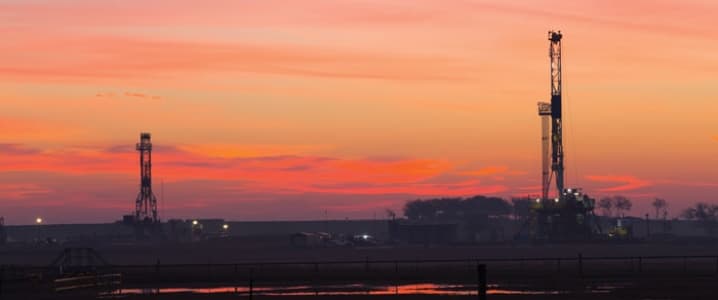Back in early 2011, the Haynesville shale play in east Texas, northwest Louisiana, and southwest Arkansas surpassed the Barnett Shale in Texas as the highest-producing shale gas play in the U.S., according to reported pipeline flows. Since 2013, however, Haynesville production has been falling amid low gas prices, and the shale play has been outrun by the lower-cost Marcellus and Utica basins in the Northeast.
The Haynesville may have been down, but it is not yet out. Recent production forecasts and Haynesville’s geographical proximity to the Sabine Pass LNG terminal and other planned LNG export facilities, as well as its proximity to planned additional pipeline capacity to Mexico, may help Haynesville come back to life again. The uncertainty and downside, as always, are the price of natural gas and concerns that a glut would keep prices low, at least in the short to medium term. But many producers have been hedging gas production to try to offset the negative impacts of price volatility.
At the CERAWeek event in Houston earlier this month, Chesapeake chief executive Doug Lawler said, referring to Haynesville, “It was largely written off by industry two to three years ago, but it has reemerged stronger than ever.”
According to EIA’s latest Drilling Productivity Report, Haynesville natural gas production is expected to increase by 108 million cubic feet/day from March to stand at 6.247 billion cubic feet/day in April.
This year, total U.S. dry natural gas production is expected to average 73.7 billion cubic feet per day (Bcf/d), up by 1.4 Bcf/d from the 2016 level, and reversing the 2016 production decline, which was the first annual decline since 2005, EIA’s Short-Term Energy Outlook shows. According to the EIA, new natural gas export capabilities and growing domestic natural gas consumption will contribute to the Henry Hub natural gas spot price rising from an average of $3.03/MMBtu this year to $3.45/MMBtu next year.
The EIA also expects that the U.S. will become a net exporter of natural gas on an average annual basis by 2018. The transition to net exporter would be driven by declining pipeline imports, rising pipeline exports, and higher LNG exports. Expectations of rising natural gas exports, especially from new LNG terminals, sustain projections of continued growth in U.S. natural gas production. Related: Climate Change Policies Working: CO2 Emissions Flat For 2 Years In A Row
As of January 2017, the Federal Energy Regulatory Commission (FERC) had seven LNG export terminals approved and already under construction, and another four approved but not yet under construction. Most of those approved LNG export terminals are in Louisiana and Texas, with one in Georgia and one in Maryland.
So Haynesville could be a beneficiary of that additional export capacity of LNG along the Gulf coast. In addition, it is also poised to benefit from the rising U.S. natural gas exports to Mexico via pipelines, with pipeline capacity also set to grow, as Mexico is largely meeting its growing electricity demand with new gas-fired plant generation.
So export capacity is set to grow, and the companies that have emerged from the oil price downturn and from the low gas prices are now increasingly hedging production to spare themselves the negative impact of low prices. Related: The 5 Biggest Strategic Petroleum Reserves In The World
Mining and energy commodities giant BHP Billiton has operations in the Haynesville shale, but in 2015 it decided to suspend development there amid the low natural gas prices, its asset president of shale, Alex Archila, said at the CERAWeek event earlier this month. BHP Billiton has recently launched a gas price hedging strategy in North America. That strategy was an “essential aspect of the return to Haynesville,” Archila noted.
According to Wood Mackenzie, oil hedging in the U.S. is surging, while gas hedging activity in Q4 2016 was more subdued, “mainly because producers already held healthy positions for 2017”. WoodMac’s analysis shows that 2.2 billion cubic feet/day of new gas hedges were added in Q4 2016, down by 57 percent from Q3 2016, with most of the new gas derivatives added at strike prices between $3.00/mcf and $3.60/mcf Henry Hub. Analyzing a peer group of producers, WoodMac found that the group’s hedged gas production accounted for 42 percent of its output for 2017, up from 32 percent in 2016.
With export capacity close to Haynesville growing, the shale play has the chance to play a bigger role in rising U.S. natural gas exports. The question is: will producers find the sweet spot between Haynesville’s well economics and natural gas prices?
ADVERTISEMENT
By Tsvetana Paraskova for Oilprice.com
More Top Reads From Oilprice.com:
- Huge 300,000 Bpd Fracklog Could Derail Oil Price Recovery
- Maduro’s Last Stand: Military Takes Over Struggling Oil Sector
- Trump Can’t Save Coal


















